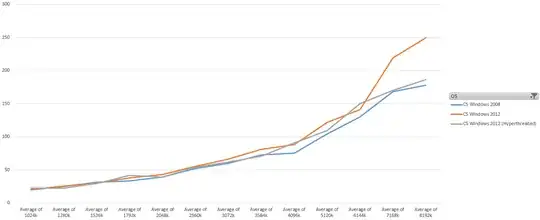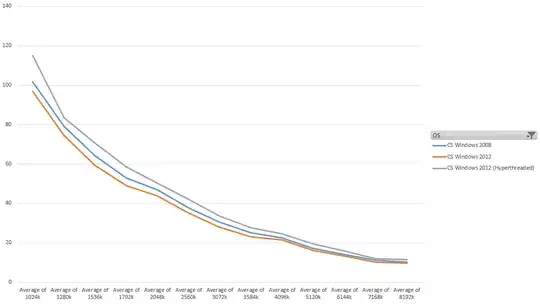I've recently had to benchmark the CPU performance of a variety of operating systems on identical machines. I've been using the 'benchmark' functionality of Prime95 to obtain a consistent test. I've gotten some unexpected results such as Windows 2012 performing significantly worse than Windows 2008. It's prmpted me to wonder what Prime95 tests actually do and what I can infer from my results.
There appear to be two distinct phases to the test. Phase one appears to use one of what Prime95 calls a "Worker" but does so using a various numbers of threads. Looking at activity on my CPU I can see that each core is being used fairly evenly. Here's a graph:

The orange line is a normal Windows 2012 machine and the blue line Windows 2008. The grey line is Windows 2012 with hyperthreading enabled. As you can see Windows 2012 tails off significantly as the tests become more intensive.
Phase two appears to be the same as phase one except for the the idea that it benchmarks "multiple workers to measure the impact of memory bandwidth." Here's the corresponding graph for this test:

Phase two, however, doesn't quite marry with the results from phase one; Windows 2012 doesn't tail off as it did before and the hyperthreaded install is better even than Windows 2008.
My question is, what operations is the Prime95 benchmarking tool undertaking and what sort of factors might come into play to deliver the results I'm seeing?